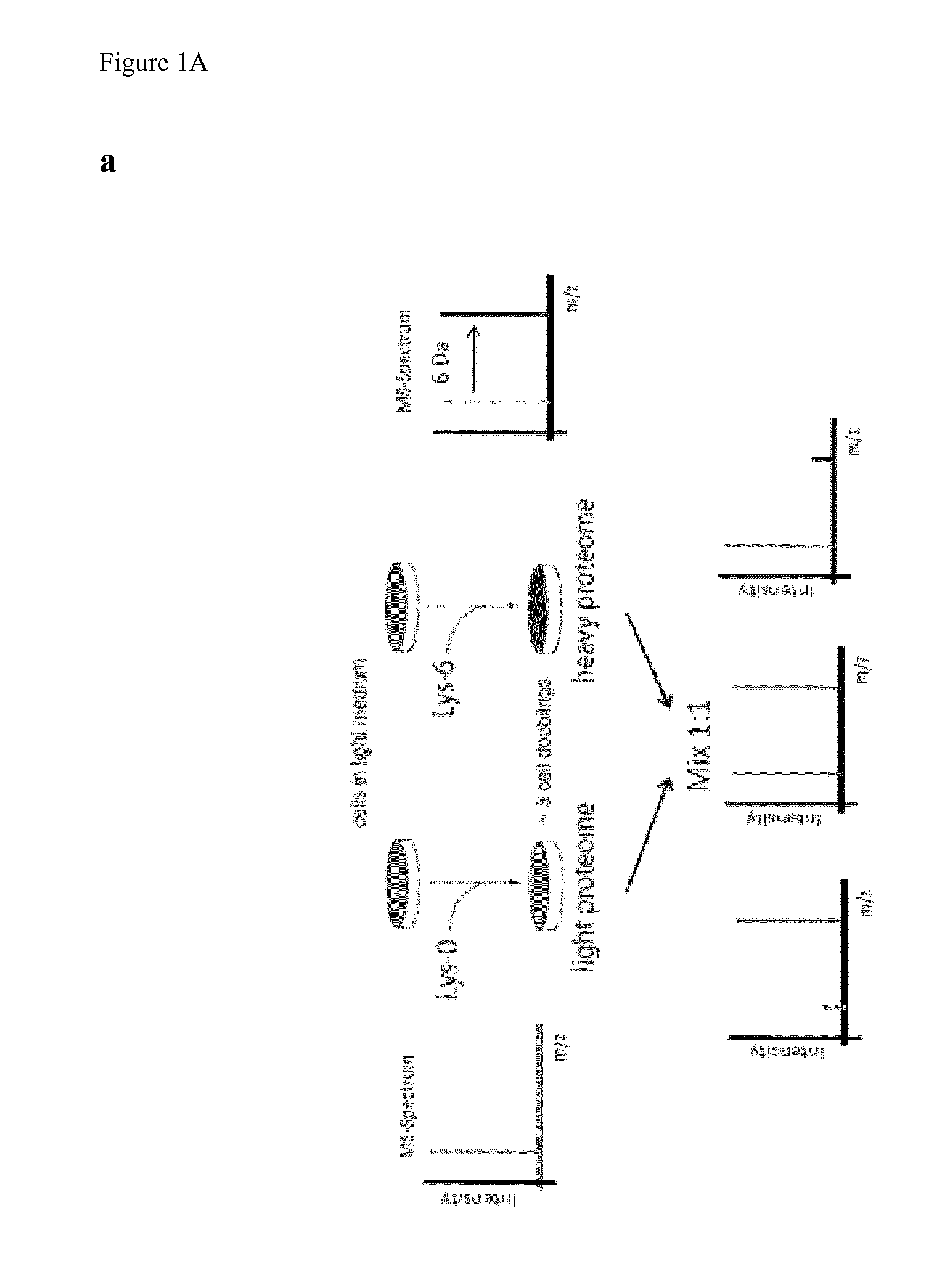Isotopic labeling of higher organisms
a higher organism and isotopic technology, applied in the field of isotopic labeling of higher organisms, can solve the problems of troublesome extension of metabolic labeling technology to other important model organisms such as fish, amphibian or dog models, and difficulty in determining the size of the proton, so as to minimize the risk of isotopic dilution.
- Summary
- Abstract
- Description
- Claims
- Application Information
AI Technical Summary
Benefits of technology
Problems solved by technology
Method used
Image
Examples
example 1
Labeling of Zebrafish with 13C6-Lysine
[0220]For the experiments the local zebrafish strain “Bad Nauheim (BNA)” and the transgenic line Tg(cmlc2:egfp) (Huang, C. J., et al. (2003). Germ-line transmission of a myocardium-specific GFP transgene reveals critical regulatory elements in the cardiac myosin light chain 2 promoter of zebrafish. Dev Dyn 228, 30-40) were used. Adult and embryonic zebrafish were maintained under standard laboratory conditions at 28°.
[0221]To label zebrafish a heavy diet based on Lys-6 labeled Escherichia coli, Saccharomyces cerevisiae (Silantes GmbH, Munich), SILAC mouse tissue and SILAC mouse diet (Silantes GmbH, Munich) was developed and used.
[0222]The lysine auxotroph E. coli DSM1099 was pre-cultured twice over night in a small volume of M9 media (Sigma-Aldrich) which was supplemented with 2 g / l glucose (AppliChem), 0.49 g / l MgSO4.7H2O (AppliChem), 0.015 g / l CaCl2.2H2O (AppliChem), 2.53 g / l drop-out amino acids without lysine (Formedium) and 0.05 g / l 13C6-Ly...
example 2
Dissection of Adult Zebrafish Organs and Preparation of Embryonic Zebrafish Hearts (Experimental Setup)
[0230]To dissect organs of adult animals, zebrafish were anaesthetized with 0.1% Ethyl-3-aminobenzoate-methanesulfonic acid salt (Tricaine, Sigma-Aldrich) solved in water. Skin and body wall muscle were carefully removed to expose internal organs like heart, liver or swim bladder. Organs were removed, shortly washed in ice-cold PBS and frozen in liquid nitrogen. Homozygous embryos of the transgenic line Tg(cmlc2:egfp) were anaesthetized at 72 hpf and 120 hpf. To isolate heart tissue, embryos were pipetted through a 1.1 mm-needle. Separated GFP-positive ventricles were identified under fluorescent light, collected, and frozen in liquid nitrogen.
example 3
[0231]Embryos at 72 hpf were gently washed in PT (0.3% Triton X100 in PBS pH 7.3) and fixed in 4% paraformaldehyde (PFA) / PBS over night. Whole-mount staining was performed in PBT (4% BSA, 0.3% Triton X-100, 0.02% NaN3 in PBS pH 7.3) using mouse monoclonal antibody zn-8 (Hybridoma Bank) in a dilution of 1:10 and AlexaFluor-conjugated secondary antibody (Invitrogen) which was diluted 1:200.
PUM
 Login to View More
Login to View More Abstract
Description
Claims
Application Information
 Login to View More
Login to View More - R&D
- Intellectual Property
- Life Sciences
- Materials
- Tech Scout
- Unparalleled Data Quality
- Higher Quality Content
- 60% Fewer Hallucinations
Browse by: Latest US Patents, China's latest patents, Technical Efficacy Thesaurus, Application Domain, Technology Topic, Popular Technical Reports.
© 2025 PatSnap. All rights reserved.Legal|Privacy policy|Modern Slavery Act Transparency Statement|Sitemap|About US| Contact US: help@patsnap.com



